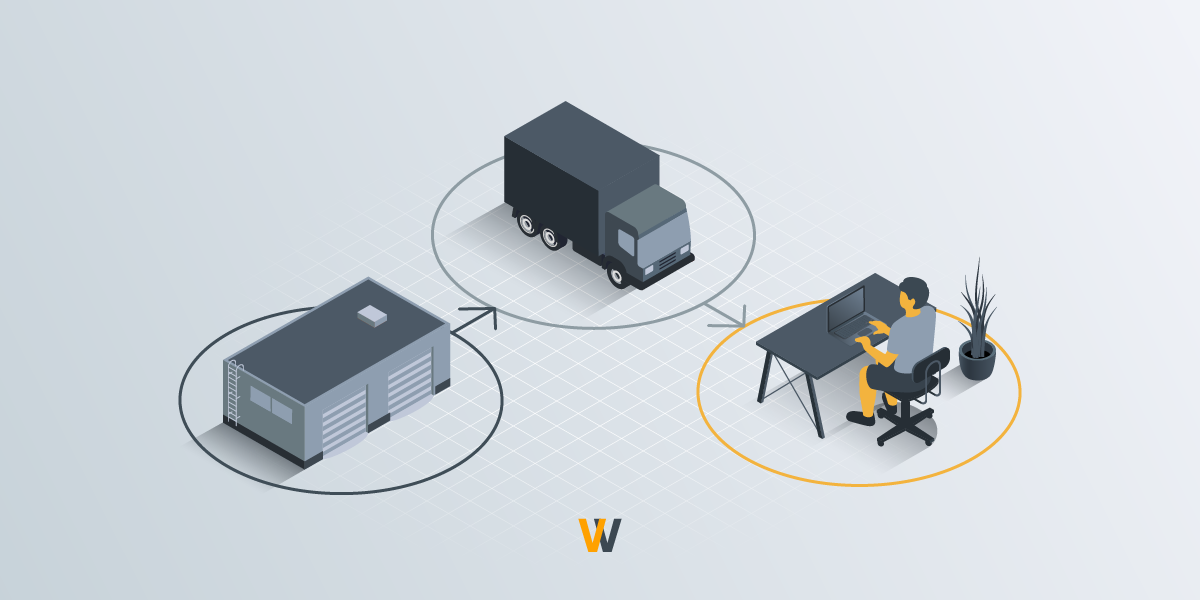Remote work and social challenges: Addressing 4 key issues with Lavinia Iosub
 Mara Quintanilla
Mara Quintanilla
Remote work has changed the landscape of the global workspace. It has opened up opportunities for people worldwide to find meaningful employment without the limitations of geographic boundaries. At the same time, it's playing a part in solving some of today's most pressing social challenges.
The post-pandemic world has demonstrated time and time again that remote work has changed the lives of many. The latest example is a record-high employment rate for people with disabilities.
In August 2022, Bloomberg reported that about 5.6 million disabled men and women ages 16-64 were employed in August, based on data from the Bureau of Labor Statistics. The share of people with disabilities working or looking for work was 37.6% that month, almost five percentage points higher than in April 2020, at the start of the pandemic.
One of the biggest obstacles preventing this group from accessing fair employment opportunities is commuting. The increase in employment for people with disabilities is partly because they don’t have to transport themselves to a physical office.
Some issues remote work can tackle are diversity and inclusion, but it doesn't end there. We spoke to Lavinia Iosub, Managing Partner at Livit, Founder of Livit Hub Bali and the Remote Skills Academy, to ask how remote work can help solve social challenges.
What to consider while creating a remote work strategy

The benefits of remote work transcend the employee-employer relationship. It can benefit society by creating more inclusive workplaces and giving people the freedom to live wherever they choose.
Companies are finding it hard to make their remote employees return to the physical office after two years of forced remote work. Just like at the start of 2020, when the world suddenly shifted to remote arrangements, employers still need to get remote work right.
When asked about the most important aspects she considers while recommending remote work policies to companies, Lavinia said:
“Companies have to consider that remote work is not the same as working from the office, but from home (or a different space). Copying the office in a remote environment is the most frequent mistake that we see, including spending most of the day in synchronous meetings and pinging people a number of times a day for updates, expecting real-time responses at any time of the day. The spoiler alert here is that it doesn't work. It quickly leads to burnout and all kinds of other issues in teams.”
“Remote work is a different setup that requires different leadership and management skills and often different tools and systems, and definitely different policies. Overall, a different mindset. If you built your company in a co-located setup, it's not a natural transition. It needs to be well thought out and well implemented. Unless you want to end up like Yahoo during Marissa Meyers' time when they went remote and quickly decided that it didn't work and reverted to the office.”
Lavinia has written extensively about the difference between remote-first companies and remote-forced companies. She mentions that the main difference is the intentionality behind each remote setup. The common mistakes that companies make are thinking that remote work is the same as working in the office, lacking the right remote infrastructure, and forgetting to be human when working from home.
The benefits of a distributed workforce

It’s not news that the benefits of remote work are huge for employees and employers alike. From reducing employee turnover to increasing work satisfaction, even tech giants have seen gains from a distributed strategy.
For those still unsure, we asked Lavinia what the most significant benefits of having a distributed workforce are. She summarizes them in three main aspects:
“One is unlimited or global talent pools for all and any skillset you might be looking for. With that comes a diverse workforce, which has so many advantages.
Number two would be reduced overheads, for example, office expenses. Companies that save a lot because they transition to a remote work setup should consider putting some of those savings back into building the remote team in an intentional way, that being tools or times of the year when the team meets in person.
The third thing I would highlight is higher retention levels, especially when you do the remote work setup right. An example would be someone from our company, Alex, who had to move three times over the last few years due to family reasons. Instead of her looking for a job every time and us needing to replace her, we were able to continue working together.”
In this scenario, companies will be forced by the attrition numbers to consider remote work a fundamental policy and a natural alternative to retaining top talent.
“This is just an aspect of retention which predates the pandemic. But post-pandemic, we see now in the media a plethora of articles where so many people will simply quit if forced back into the office. So even people at Apple, one of the top employers in the world, quit because they're not allowed to work remotely. If Apple can't retain their talent, I don't think any of us should claim to be able to,” Lavinia adds.
Lavinia Iosub has over 10 years of experience in new ways of working, modern leadership, remote work culture, work-life balance, and sustainable entrepreneurship. Livit supports entrepreneurs, remote workers, and startup teams to build innovative businesses, careers, and lifestyles, that fully align with the digitalization era and the best interests of society.
Can remote work solve social issues?
For Lavinia, remote work is an important equalizer. Some of the main issues that remote work can solve are diversity and inclusivity. This leads to opportunities for people worldwide. When asked if remote work can solve societal problems, Lavinia answered:
“In the future of work, for many employers, it will matter less and less where you are born, what passport you hold, where you went to school. What does matter, and it will matter more and more, is if you can get the work done well and on time. Inequality of chances and opportunities is one problem that can get definitely addressed when remote work becomes more prevalent.”
Some of the social issues that remote work has been tied to recently include its ability to aid in controlling inflation, sustainability, gentrification and decentralization.

Remote work and inflation
We asked Lavinia about remote work as a strategy to reduce inflation or other financial stressors for the economy. The United States reported in August that remote work was helping fight inflation because companies were paying lower salaries. Here’s what she said:
“That's a way of looking at it. But I don't think you have to pay people lower wages to save money. If you're working remotely, you're already saving a ton of money on overhead like office space, associated services, transportation to business meetings, airplane tickets, not to mention sometimes relocation packages.”
Remote work and gentrification
Lavinia explains that another issue that remote work can address is gentrification. This is a process known to change the characteristics of a neighborhood as a result of affluent people moving in and attracting new businesses, which often leads to the displacement of the original inhabitants.
“I think remote work can also help decrease gentrification in certain areas. Basically, what we see is that as remote work grows, the traditional draw card of urban living in a very specific area in proximity of your job quickly faints,” Lavinia says.
“If we're speaking of the US, I recently saw a statistic showing that more than 10% of American households planned to move to smaller or cheaper locations. And 66% of professionals in tech finance and other fields would consider leaving San Francisco, the heart of Silicon Valley and the tech world globally, if they could permanently work from home.”
Remote work and sustainability
We’ve seen that remote work can benefit the environment thanks to reduced overhead costs for companies or reduced commuting times for employees, which can translate into a smaller carbon footprint. However, working from anywhere can also mean higher CO2 emissions from traveling via airplane. In that sense, here’s what Lavinia shared regarding remote work providing long-term eco benefits.
“I would say this really depends on how people approach their remote work life. Does remote work reduce pollution and traffic in large cities when large amounts of knowledge workers no longer have to go to work and back every single day? Yes, absolutely. But if all these people started traveling all over the globe and getting on planes every other week, perhaps it doesn't stack up positively.
Another important aspect is that people who work remotely also often take the chance to work from a different city, region, or country where they tend to get a wider understanding of other parts of the world, including ecological concerns, and hopefully get more actively involved in solving them. We definitely see that with a part of the Nomad community or location-independent community here in Bali. I would say that remote work can have a positive impact, overall, with a few ifs.”
Remote work and decentralization
Since the early days of the pandemic, remote workers have seized the opportunity to work from their preferred location. This has meant moving away from large cities towards smaller and cheaper towns. The process is already shifting the American geography.
The Washington Post reported that Americans have spread into rural and suburban areas at rates that hadn’t been seen in the last decade. For example, Manhattan and San Francisco experienced the fastest population loss of the counties with the most remote-eligible jobs with more than 10,000 residents from 2020 to 2021.
Decentralization, or the migration from megacities to smaller ones, allows workers to choose the location that makes the most economic sense. We asked Lavinia if Nomad visas are a good strategy to help with decentralization, and here’s what she said:
“In terms of decentralization and gentrification, I think digital nomads can work both ways. It can help decrease gentrification back home, but it can potentially create short-term issues and opportunities for the local host community when a certain destination becomes very popular with nomads.”
But nomads are interested in complying with local laws whenever possible. She adds:
“I know many nomads who would be very happy to be more legal, not have to do visa runs so often and be able to contribute more to the local communities hosting them. I believe that the future of nation-states includes a fierce fight over talented and wealthy –or on their way to being wealthy– individuals who can really take their brains and laptops anywhere and everywhere around the world.
There are already 20+ countries offering remote work or Nomad visas and this is just the beginning. The states that get a head start on this, as Estonia did many years ago, will derive massive, massive wins from this.”
When asked if you can be a digital nomad and have a positive impact on the environment, Lavinia shares:
“There is no one blanket answer to this. But I believe you can if you are thoughtful, and the few aspects here that I would think of, obviously, the CO2 emissions of the flights that most of us take to get places have a strongly negative impact on the environment. At the same time, if you are mindful of your choices, especially if you are what we call a slomad, traveling or moving to a new place less frequently, and making informed choices in terms of what you consume, your impact can definitely be positive.”
How remote work is helping to give back to communities

Although digital nomads stay in places for short periods, their impact can be significant to the local communities both positively and negatively. We asked Lavinia why it’s important for digital nomads to give back to the local communities they visit, and she told us:
“Part of the idea of being a digital nomad or location-independent professional –or exploring the world and exposing yourself to different cultures and mindsets– is to become a more aware and well-rounded individual, at least for me. It's only natural that one would want to give back to the local community hosting them.”
Lavinia has ample experience when it comes to giving back to the community. After spending most of her time in Bali, she created the Remote Skills Academy, an education platform for Indonesians who want to learn to work online.
“I started the Remote Skills Academy to address the huge gap in opportunities and pay between those who can work online and those who cannot,” Lavinia shares. “In a place like Bali, that gap is often very visible, and for me, it was very frustrating for a very long time.”
“We started small with a 20 people cohort, and we were experimenting and winging it in many ways. We're now at 500 alums and a tribe of over 100 trainers, mentors, contributors, and partners. That's basically over 500 young people who are now all equipped with skills that help them level up their careers and ultimately, level up their lives and communities.”
“There's so much to gain from creating learning communities that transcend culture and class and level of previous education or experience. In many ways, we're all in this together, the state of the world right now. And we can only really attain real progress by working together rather than all of us hiding behind our little passports and borders and groups of people that we may identify with.”
Wrapping up
From sustainability to gentrification, remote work continues to impact aspects outside of work itself. Not only does a distributed arrangement provide opportunities for marginalized groups, but it's also a way to ensure that companies retain their employees as they evolve and scale.
Having a distributed workforce also means providing the equipment employees need to fulfill their roles. Handling the shipping and management of workstations across the globe is easier than ever with services like GroWrk. Our IT asset management platform allows businesses to scale in over 150 countries. Join the many companies shaping the future of work through remote work and request a demo today.






